Physical Address
304 North Cardinal St.
Dorchester Center, MA 02124
The skin of the male genitalia, glans penis, foreskin (prepuce) and scrotum can be involved by diseases that affect the rest of the skin, such as eczema and psoriasis. The scrotum is particularly prone to the development of lichenified eczema from chronic scratching (lichen simplex).
Patients may be concerned about appearances that are within the range of normality.
Pearly penile papules . Flesh-coloured smooth papules, 1–3 mm in diameter usually located on the coronal margin of the glans, are found in up to a half of all men. Histologically they are angiofibromas. Reassurance is given.
Sebaceous gland hyperplasia . Prominent sebaceous glands commonly can be seen on the penis or scrotum. They are sometimes called Fordyce spots.
Dermatoses with a specific focus on the male genitalia include:
Balanitis describes inflammation of the penile skin, e.g. by eczema ( Fig. 72.1 ). Circinate balanitis is an eroded or crusted penile eruption seen in Reiter’s syndrome (p. 56)
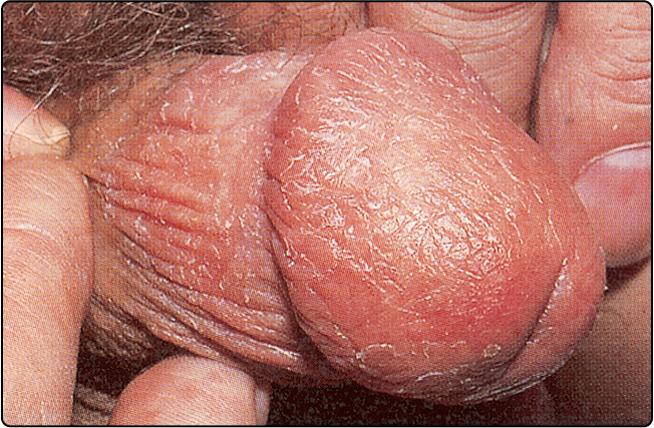
Lichen sclerosus has a predilection for the penis (p. 54). The patient may complain of itching, discomfort or dyspareunia. White plaques are seen sometimes with haemorrhagic areas, erosion and sclerosis. The glans, especially around the urethral meatus, is often involved ( Fig. 72.2 ). The severe end result can be balanitis xerotica obliterans (where the meatal aperture is considerably narrowed) or phimosis ( Fig. 72.3 ). Treatment is with a highly potent topical steroid (clobetasol propionate). If medical treatment fails, circumcision may be indicated. In boys circumcision can remove all diseased tissue and prevent disease progression. Surgery is required for severe meatal stricture. Chronic lichen sclerosus can predispose to squamous carcinoma (in up to 10% of cases).
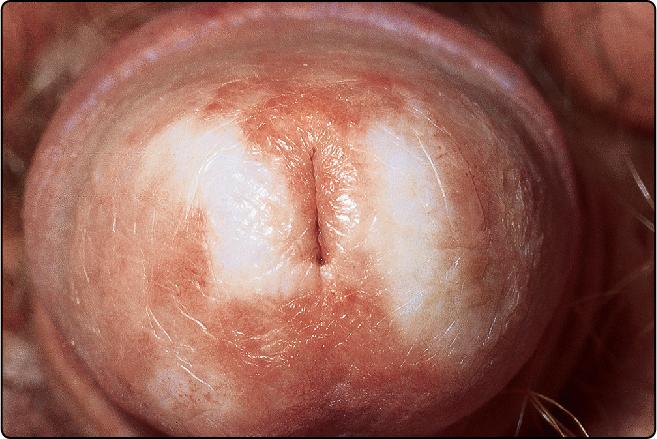
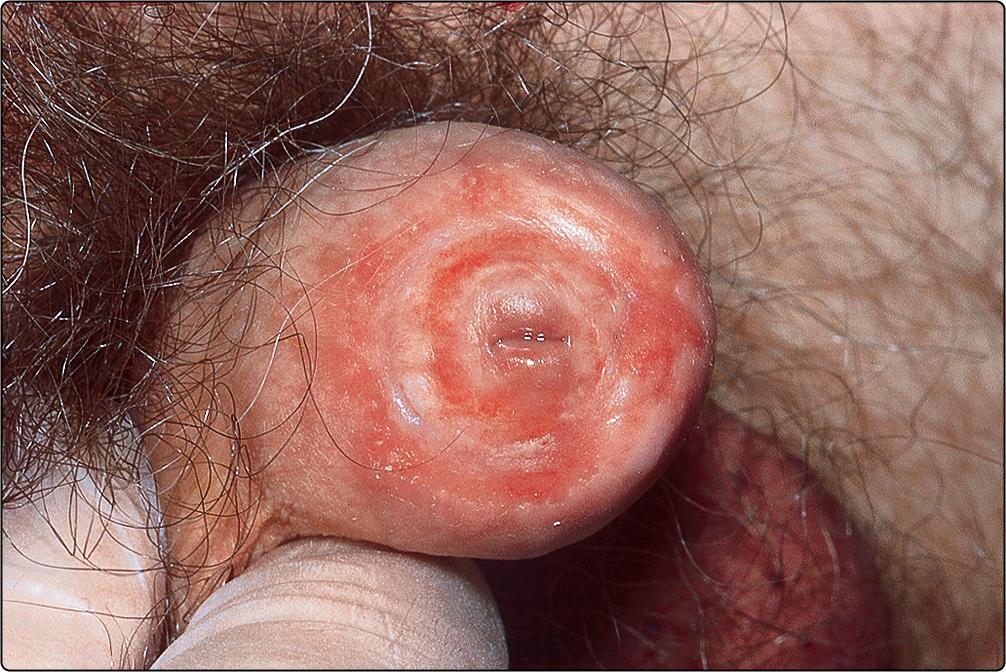
Lichen planus of the penis may present with typical purplish papules (p. 54) but sometimes manifests as an erosive form ( Fig. 72.4 ). Lichen nitidus also may involve the penis ( Fig. 72.5 ).
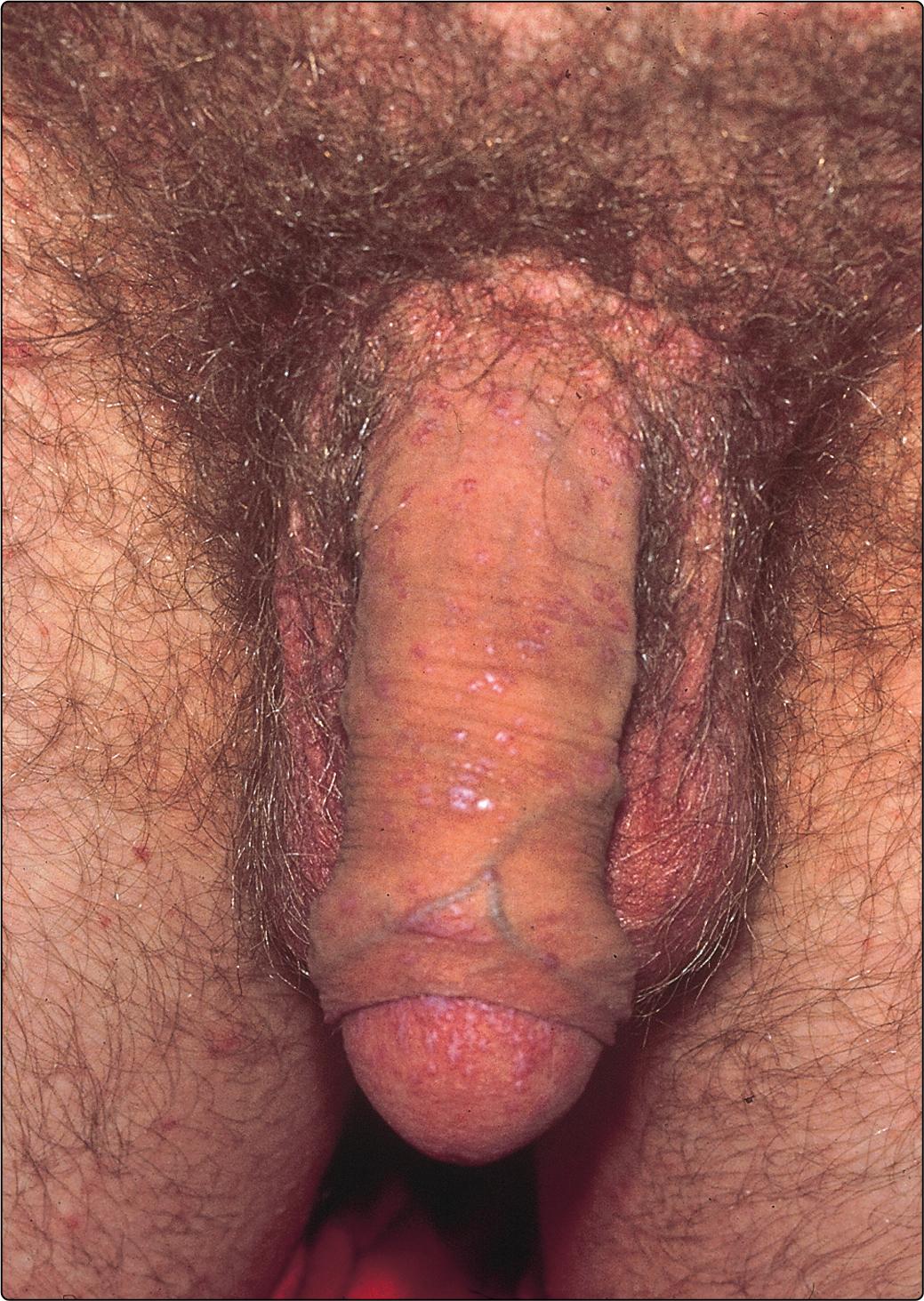
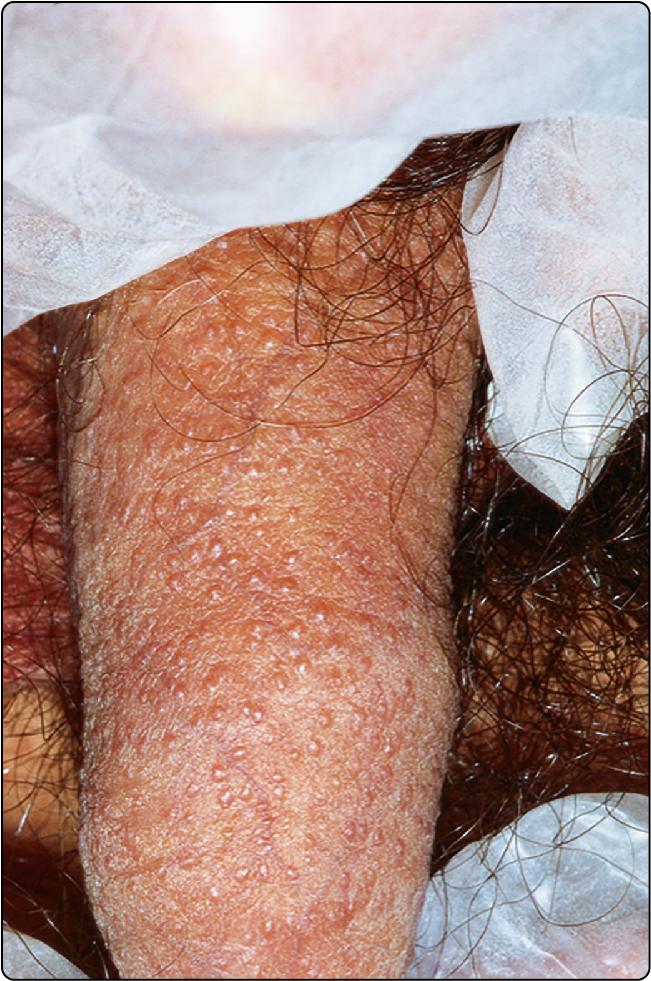
Zoon’s balanitis presents as well-demarcated glistening moist red or brown patches on the glans or inner foreskin ( Fig. 72.6 ). It tends to affect uncircumcised middle-aged or elderly males and seems to be a reaction to irritant factors. Topical steroids can help but the condition is often refractory. Circumcision is curative.
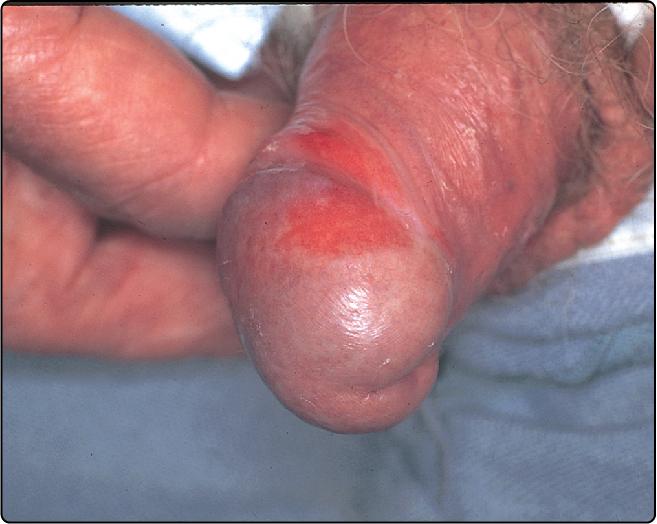
Become a Clinical Tree membership for Full access and enjoy Unlimited articles
If you are a member. Log in here